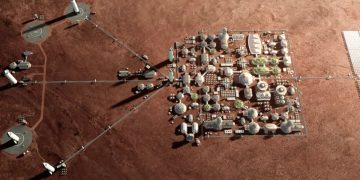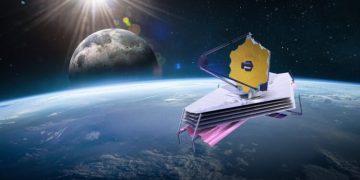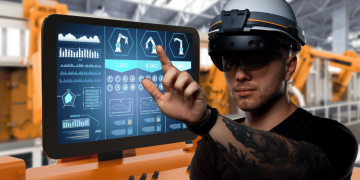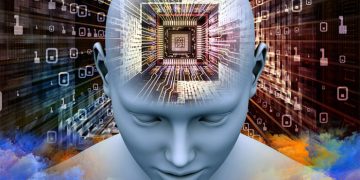Introduction
As climate change and biodiversity loss continue to pose significant threats to our planet, the need for innovative solutions to protect the environment has never been more urgent. Artificial intelligence (AI) has emerged as a powerful tool in addressing these challenges, offering smart solutions that enhance our ability to monitor, predict, and manage environmental issues. From monitoring endangered species to improving waste management, AI is revolutionizing environmental conservation efforts worldwide. This article will explore how AI is being applied in various aspects of environmental protection, including wildlife monitoring, climate prediction, and waste management, while also considering the potential challenges and ethical implications.
1. AI in Wildlife Conservation: Protecting Biodiversity
1.1 Monitoring Endangered Species
AI is playing a crucial role in monitoring endangered species and protecting biodiversity. Traditional methods of tracking animal populations, such as manual surveys and tagging, are time-consuming, costly, and often ineffective. AI-powered solutions, such as camera traps equipped with computer vision, are enabling conservationists to gather large amounts of data efficiently and accurately.
For example, AI algorithms are used to analyze images captured by cameras in wildlife reserves to automatically identify and track animals. This technology allows conservationists to monitor animal populations, study their behavior, and detect potential threats (like poaching or habitat destruction) in real-time. AI is also being used in acoustic monitoring, where machine learning models can analyze animal sounds to track species in difficult-to-reach areas, such as dense forests or oceans.
1.2 Preventing Poaching with AI
Poaching is one of the leading causes of wildlife loss. AI has been leveraged to develop advanced surveillance systems capable of detecting illegal poaching activities. Machine learning models can analyze data from drones, infrared cameras, and sensors to identify suspicious activity in protected areas. These systems can detect human movement patterns or unusual sounds (like gunshots) and alert park rangers in real-time, enabling a rapid response to poaching attempts.
AI-driven predictive models are also helping conservationists anticipate poaching hotspots, based on historical data, animal migration patterns, and environmental factors. By identifying areas at higher risk for poaching, conservation efforts can be concentrated in the most vulnerable regions, maximizing the impact of resources and personnel.
2. AI for Climate Change Mitigation and Adaptation
2.1 Predicting Climate Patterns and Disasters
Climate change is one of the greatest environmental challenges of our time. AI is playing a pivotal role in understanding, predicting, and mitigating its impacts. AI models are being used to analyze vast amounts of climate data, enabling researchers to forecast long-term climate trends and short-term weather patterns more accurately. These predictions help governments and organizations make informed decisions about disaster preparedness, resource allocation, and climate adaptation strategies.
Machine learning algorithms can process satellite data, weather patterns, and historical climate data to create highly accurate models that predict the impacts of climate change in different regions. This information is essential for planning resilient infrastructure, protecting vulnerable ecosystems, and preparing for extreme weather events, such as hurricanes, wildfires, and floods.
2.2 AI in Carbon Emissions Monitoring
Reducing carbon emissions is critical to mitigating climate change. AI is being used to monitor carbon emissions in real time, enabling governments and organizations to track their progress toward emissions reduction targets. AI-powered sensors, satellites, and drones are collecting data on air quality, greenhouse gases, and carbon footprints across various industries.
For example, AI models are being applied to satellite images to monitor deforestation and land-use changes, which contribute to carbon emissions. By identifying trends and patterns, AI helps decision-makers take corrective actions to reduce environmental impact. Additionally, AI is being used to optimize energy usage in industries and buildings, reduce waste, and improve the efficiency of renewable energy sources like solar and wind power.

3. AI in Waste Management and Recycling
3.1 Smart Waste Sorting
Efficient waste management is crucial to reducing pollution and conserving resources. Traditional recycling methods can be labor-intensive and prone to errors, leading to inefficient waste sorting and contamination of recyclable materials. AI-powered solutions are transforming the waste management industry by automating waste sorting processes and improving recycling rates.
AI systems equipped with computer vision and machine learning can recognize and classify different types of waste, such as plastics, metals, paper, and organic materials. These systems use cameras and sensors to identify the materials in a waste stream and sort them accordingly, reducing contamination and improving recycling efficiency. In some cases, robots are used to physically sort waste, increasing the speed and accuracy of the process.
3.2 Waste-to-Energy Solutions
AI is also being utilized to optimize waste-to-energy technologies, where waste materials are converted into energy. By using AI algorithms to analyze waste streams and predict energy output, waste-to-energy plants can maximize efficiency and reduce environmental impact. These systems can monitor the composition of waste, predict its energy potential, and adjust processes to ensure that energy production is optimized.
AI can also help in managing waste-to-energy facilities by predicting maintenance needs, optimizing the flow of waste into energy generation processes, and enhancing the overall efficiency of the plant. By improving these systems, AI helps reduce landfill waste and supports the generation of cleaner energy from waste materials.
4. AI for Sustainable Agriculture
4.1 Precision Agriculture
AI is transforming the agricultural sector by promoting sustainable farming practices. Through the use of AI, farmers can optimize the use of resources, reduce waste, and increase crop yields while minimizing their environmental impact. AI-driven precision agriculture involves using sensors, drones, and machine learning algorithms to monitor soil health, predict crop yields, and optimize irrigation and fertilizer use.
By analyzing data from sensors placed in the field, AI systems can provide farmers with real-time insights on the condition of their crops, enabling them to make data-driven decisions on watering schedules, pesticide application, and harvesting times. This reduces the overuse of water, chemicals, and fertilizers, leading to more sustainable farming practices and lower environmental impact.
4.2 AI for Pest and Disease Control
Pests and diseases can significantly affect crop yields, leading to overuse of pesticides and chemicals. AI-powered systems can help identify early signs of pest infestations or plant diseases, allowing farmers to take preventative actions before the problem spreads. Using image recognition software and machine learning models, AI can analyze images of plants to detect abnormal patterns or symptoms that indicate pest damage or disease.
This early detection system helps reduce the reliance on harmful pesticides, which can have long-term detrimental effects on the environment and human health. By optimizing pest and disease control, AI contributes to more sustainable and eco-friendly agricultural practices.
5. Ethical Considerations and Challenges
5.1 Data Privacy and Surveillance Concerns
As AI systems become increasingly integrated into environmental conservation efforts, concerns about data privacy and surveillance arise. For example, in wildlife monitoring, AI-powered cameras and drones can collect vast amounts of data about animal populations and behavior. While this data is crucial for conservation efforts, there are ethical concerns about privacy and the potential misuse of this information.
In addition, AI-based surveillance systems for detecting illegal activities, such as poaching or deforestation, raise questions about the balance between security and privacy. As AI continues to play a larger role in conservation, it is essential to ensure that ethical guidelines are in place to protect sensitive data and prevent misuse.
5.2 Accessibility and Resource Allocation
The implementation of AI-based solutions for environmental conservation often requires significant investment in technology, infrastructure, and expertise. For many developing countries or regions with limited resources, access to these advanced technologies may be out of reach. This creates a disparity in the ability to adopt AI-driven conservation practices, which could hinder global efforts to address environmental challenges.
Efforts should be made to make AI technologies more accessible to regions that need them most, including providing training, resources, and funding to support the implementation of AI-based conservation solutions.
6. Conclusion
AI is playing a transformative role in environmental conservation, offering innovative solutions that can help mitigate climate change, protect wildlife, and improve waste management practices. From monitoring endangered species to predicting climate patterns and optimizing agricultural practices, AI is helping us tackle some of the most pressing environmental challenges of our time. However, it is crucial to address the ethical and logistical challenges associated with AI implementation, ensuring that these technologies are accessible, transparent, and used responsibly. As AI continues to evolve, it holds the potential to revolutionize environmental conservation and create a more sustainable future for generations to come.












































Discussion about this post